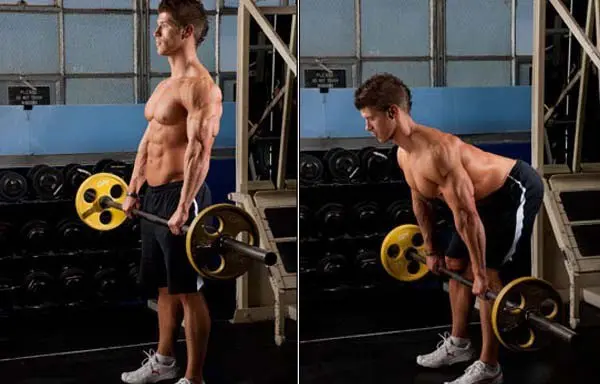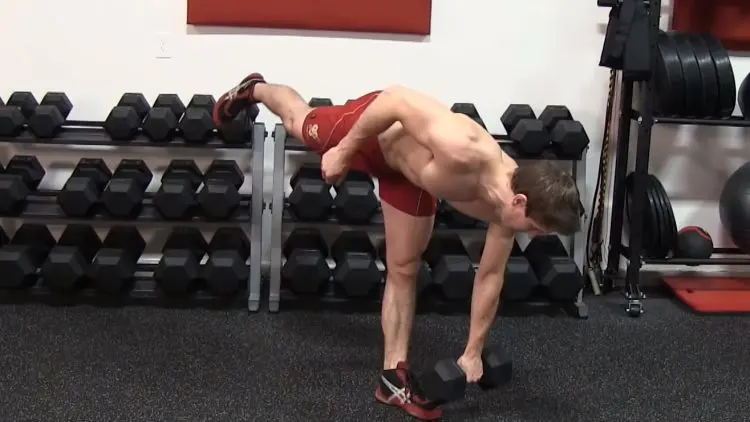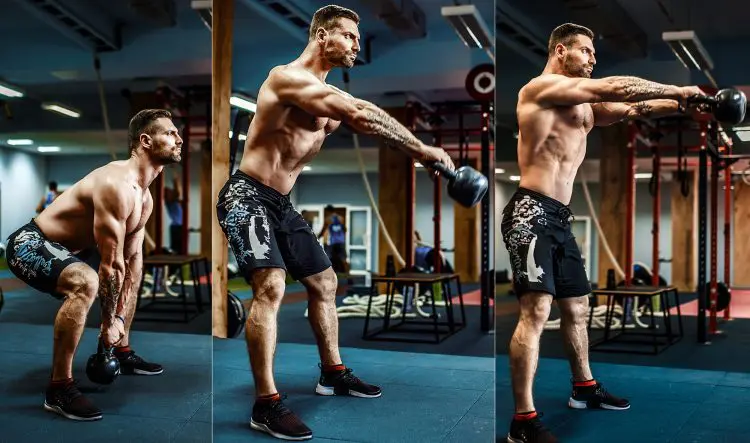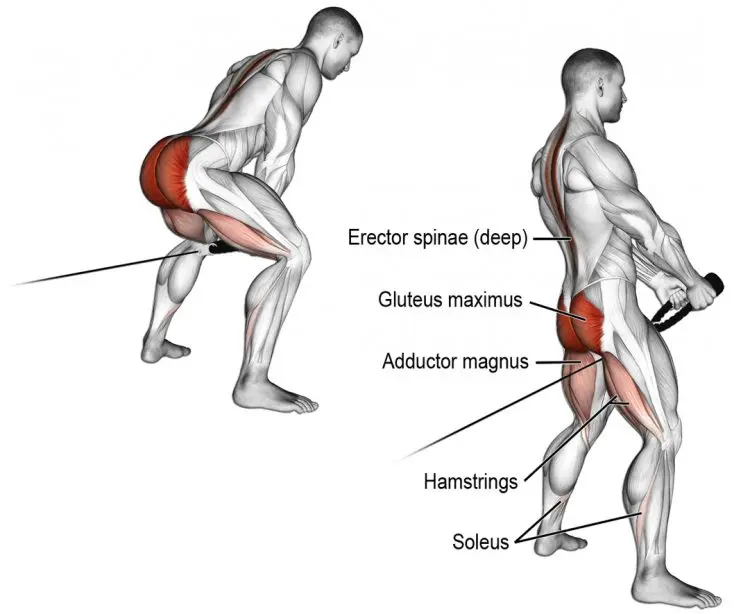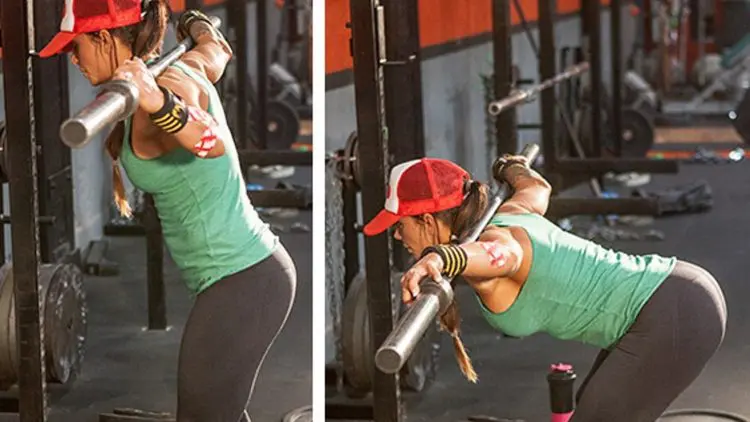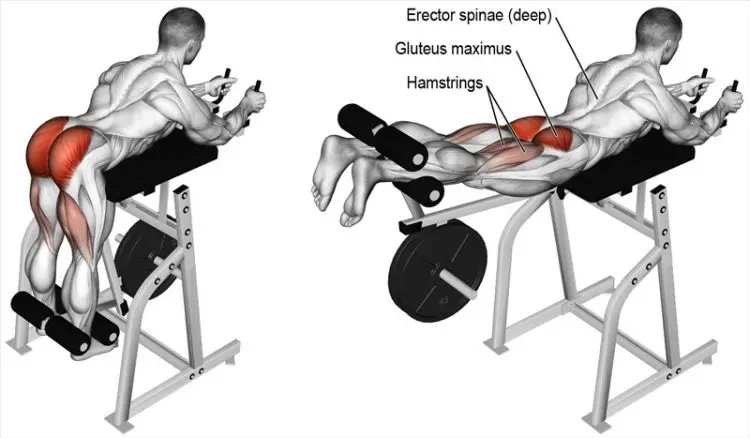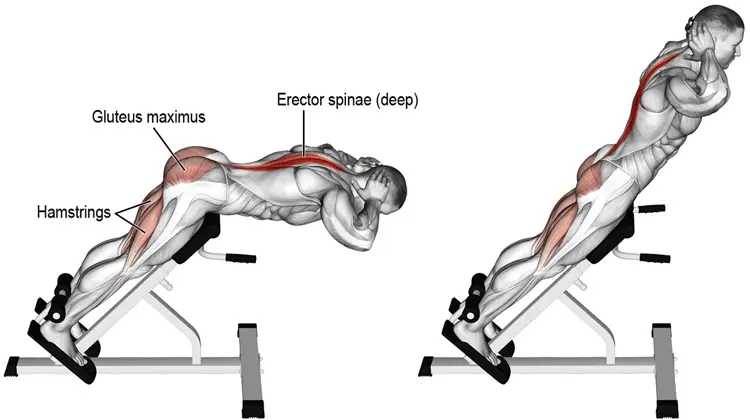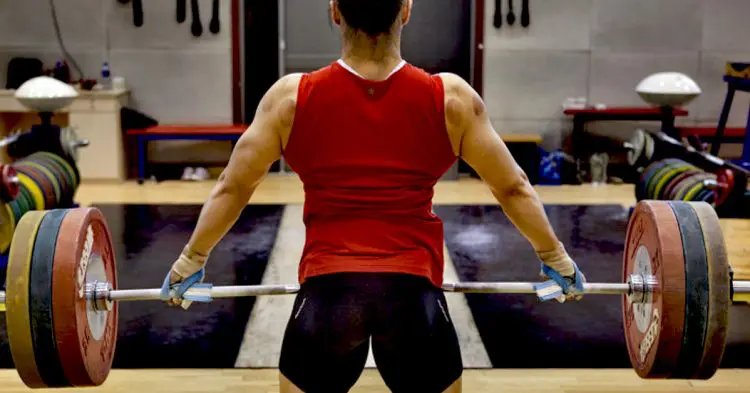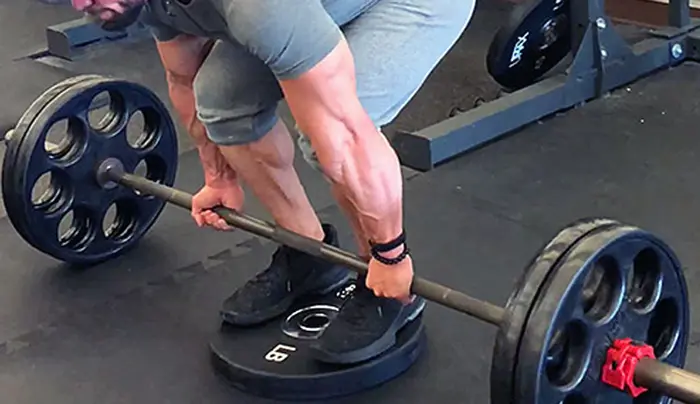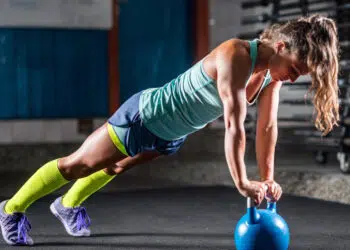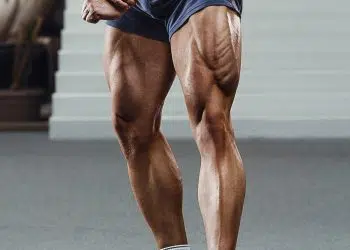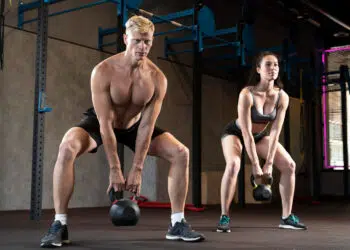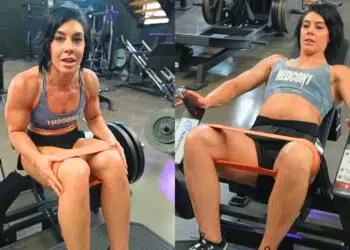Whether you want to run faster, jump higher, kick harder, lift heavier, or just look your best, a strong and powerful posterior chain is a must. The posterior chain is the collective term for the muscles on the back of your body, specifically, your hamstrings, gluteus maximus, and erector spinae.
Of all the exercises you can do for your posterior chain, the hip thrust is one of the most popular. There are several ways to perform hip thrusts, including with a barbell, resistance bands, or using just your body weight. They can also be done using two legs or one and with your shoulders OR hips elevated on a bench.
It’s a very versatile exercise!
Hip thrusts are relatively easy to learn and don’t put too much stress on your lower back. You don’t even need much equipment to do them – just a bench and a barbell. You can also do them on the floor without weights, a variation called a glute bridge.
However, as useful as hip thrusts can be, doing the same exercise over and over again can soon get old. Not only will too many hip thrusts make your workouts boring, but it could make them less productive. The more often you do an exercise, even one as good as hip thrusts, the less potent it becomes as your body will become accustomed to it.
The good news is that there are plenty of exercises you can do that are every bit as productive as hip thrusts. These hip thrust alternatives work the same muscles but in a different way, using a range of training equipment.
Level Up Your Fitness: Join our 💪 strong community in Fitness Volt Newsletter. Get daily inspiration, expert-backed workouts, nutrition tips, the latest in strength sports, and the support you need to reach your goals. Subscribe for free!
Whether you work out in a commercial gym or in a garage gym, we’ve got the best hip thrust alternatives for you!
The 10 Best Hip Thrust Alternatives
These exercises work the same muscles as hip thrusts and offer many of the benefits of this popular exercise. Use them anytime you need a break from hip thrusts but still want a great posterior chain workout.
1. Romanian Deadlift
Rumor has it that Romanian deadlifts (RDLs) are so-called because they were first used by Romanian Olympic lifters as an accessory exercise. This may or may not be true but, what we DO know is that this is an excellent posterior chain developer.
RDLs are a little harder on your lower back than hip thrusts, so you should take care if you suffer from lower back pain. But, providing you don’t round your lumbar spine, this exercise should be safe for most people.
Read our guide to learn how to do this productive movement.
2. Single-leg Romanian Deadlift
If you’ve mastered regular Romanian deadlifts, you’re probably ready for a new challenge – single-leg RDLs. This exercise helps identify and fix left to right strength imbalances and is good for your balance, coordination, and mobility.
As an extra benefit, single-leg RDLs are also easier on your lower back as you won’t need or be able to use as much weight.
Check out our in-depth guide to this useful hip thrust alternative.
3. Kettlebell Swing
You can do lots of exercises with a kettlebell, but the two-handed swing is arguably one of the best. Not only does it work your posterior chain like hip thrusts, but it builds explosive power too. Power is your ability to generate force quickly and is a crucial ingredient in most sports.
There are two main ways to do swings; the American swing and the Russian swing. The American swing, which is popular with CrossFit, involves swinging the weight up and overhead. In contrast, Russian swings only raise the weight to around shoulder-height.
Both options are good for your posterior chain, but the Russian swing may be easier on your lower back. Try them both to determine which one works best for you.
You can learn how to do kettlebell swings here.
4. Cable Pull-through
Cable pull-throughs are a lot like Romanian deadlifts but, because the weight is behind instead of in front of your legs, they tend to put less strain on your lower back.
You probably won’t be able to go as heavy with this exercise, but it keeps your muscles under constant tension, which means they’re still worth adding to your workouts.
You can do cable pull-throughs with bent legs or with your legs straight. Try them both to see which one works best for you.
5. Good Mornings
Good mornings are so-called because they look like you are bowing to greet someone. They’re a slightly controversial exercise because some people believe they are dangerous. However, providing you do not round your lower back, correctly performed good mornings should be no riskier than Romanian deadlifts, kettlebell swings, or any other hip hinge exercise in this article.
Learn why and how to do good mornings here. Good mornings can also be done using a Smith machine.
6. Reverse Hyperextension
Like hip thrusts, reverse hyperextensions work your glutes, hamstrings, and lower back. They’re a popular powerlifting assistance exercise. Also, like hip thrusts, reverse hypers are relatively easy on your lumbar spine.
While this exercise is best done using a dedicated reverse hyperextension machine, there are also plenty of reverse hyper alternatives that may be more accessible.
7. 45-degree Back Extensions
45-degree back extensions are also known as hyperextensions. That’s a slightly misleading name because, in most cases, you should actually avoid extending your spine too far, as that can cause injury.
Naming issues aside, this is a very potent posterior chain exercise that can be done with just your bodyweight or with weights or bands for extra resistance. Back extensions can also be done on a flat bench if you don’t have a 45-degree back extension machine available.
Learn how to do 45-degree back extensions here.
8. High Reverse Plank
The high reverse plank is a challenging calisthenic alternative to hip thrusts. It requires and develops good shoulder flexibility and can be done both isometrically (held statically for time) or dynamically (for reps).
If tight shoulders make this exercise uncomfortable (or impossible!), you can also do it with bent arms and while resting on your elbows.
9. Snatch Grip Deadlift
All deadlifts work the posterior chain. That’s one of the things that makes them so popular and widely performed. The snatch grip deadlift probably works the posterior chain the hardest because it forces you to start from a deeper position, reducing biomechanical efficiency AND increasing your range of motion.
This is a one-two punch you’ll really feel in your glutes, hammies, and lower back. The wide grip also increases upper back activation, especially between your shoulder blades.
However, the increased range of motion is a double-edged sword. If you have insufficient hamstring flexibility, you could find yourself rounding your lower back, and that’s best avoided if you want to prevent back pain. Skip this exercise if you are unable to maintain a slightly arched lumbar spine.
Learn all about the snatch grip deadlift in our in-depth guide.
10. Deficit Deadlifts
Like snatch grip deadlifts, deficit deadlifts increase your range of motion which boosts posterior chain activation. They’re easy to do; just stand on a 4-6” platform and deadlift from there.
However, because you don’t have to spread your arms so wide, you may find this variation a little more comfortable than the snatch grip variation, and you may even be able to lift more weight.
As an added advantage, you can do deficit deadlifts using a mixed grip, which is impossible with the snatch grip variation. A mixed grip, where one hand faces forward and the other faces backward, stops the bar from rolling out of your fingers.
Read our detailed guide to deficit deadlifts to learn how to do this exercise yourself.
Wrapping Up
Whatever your training goal is, you need to develop your posterior chain. Strong hamstrings, glutes, and lower back will give you a massive athletic performance boost, and adding mass to these muscles will do a lot for your appearance.
Too much time spent sitting can cause these muscles to wither and weaken, which is why posterior training is so necessary. Hip thrusts are undeniably a good exercise, but they aren’t the only (or even the best) way to work this critical body part.
Add some variety to your posterior chain workouts with the best hip thrust alternatives. Work hard, be consistent, and you’ll soon have a rear you can be proud of!
Interested in measuring your progress? Check out our strength standards for Good Morning, Snatch, Deadlift, and more.

